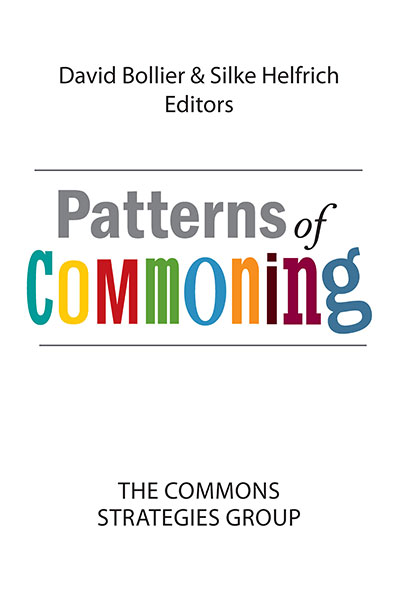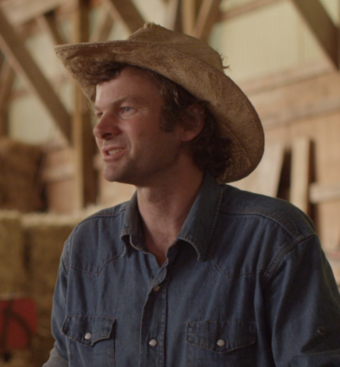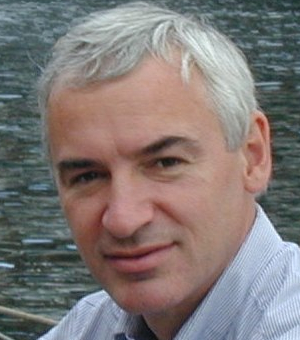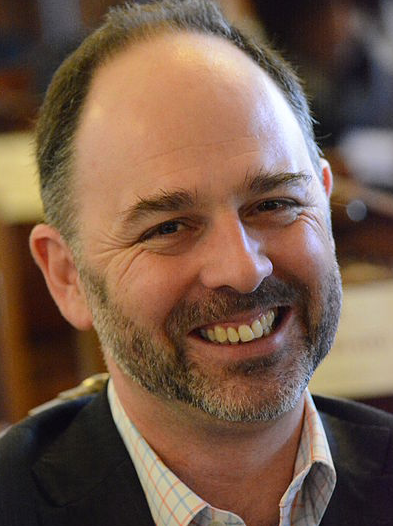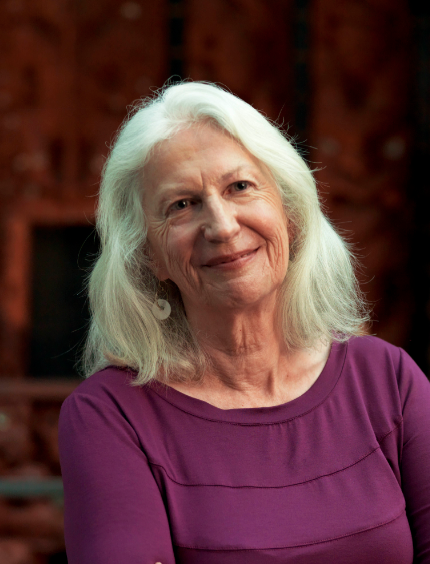Alain Ambrosi (Canada) is a designer and producer of intercultural projects, independent researcher, author, videographer and producer of the Remix The Commons Project.
Patterns of
COMMONING
Generalizing the Commons
By David Sloan Wilson
As an evolutionary biologist who received my PhD in 1975, I grew up with Garrett Hardin’s essay “The Tragedy of the Commons,” published in Science magazine in 1968. His parable of villagers adding too many cows to their common pasture captured the essence of the problem that my thesis research was designed to solve. The farmer who added an extra cow gained an advantage over other farmers in his village but it also led to an overgrazed pasture. The biological world is full of similar examples in which individuals who behave for the good of their groups lose out in the struggle for existence with more self-serving individuals, resulting in overexploited resources and other tragedies of non-cooperation.
Is the so-called tragedy of the commons1 ever averted in the biological world and might this possibility provide solutions for our own species? One plausible scenario is natural selection at the level of groups. A selfish farmer might have an advantage over other farmers in his village, but a village that somehow solved the tragedy of the commons would have a decisive advantage over other villages. Most species are subdivided into local populations at various scales, just as humans are subdivided into villages, cities and nations. If natural selection between groups (favoring cooperation) can successfully oppose natural selection within groups (favoring non-cooperation), then the tragedy of the commons can be averted for humans and non-human species alike.
At the time that Hardin published his article and I was working on my thesis, this possibility had been considered and largely rejected. A book titled Adaptation and Natural Selection, written by evolutionary biologist George C. Williams and published in 1966, was on its way to becoming a modern classic. Williams described between-group selection as theoretically possible but almost invariably weak compared to within-group selection. By his account, attempts to explain evolutionary adaptations as “for the good of the group” reflected sloppy and wishful thinking. Hardin’s article reflected the same pessimism about avoiding the tragedy of the commons other than by top-down regulation. My interest in rethinking the plausibility of group selection placed me in a very small group of heretics (see Okasha 2006, Sober and Wilson 1998, Wilson and Wilson 2007, and Wilson 2015 for more on the controversy over group selection, which in my opinion has now been mostly resolved).
Evolutionary theory’s individualistic turn coincided with individualistic turns in other areas of thought. Economics in the postwar decades was dominated by rational choice theory, which used individual self-interest as a grand explanatory principle. The social sciences were dominated by a position known as methodological individualism, which treated all social phenomena as reducible to individual-level phenomena, as if groups were not legitimate units of analysis in their own right (Campbell 1990). And UK Prime Minister Margaret Thatcher became notorious for saying during a speech in 1987 that “there is no such thing as society; only individuals and families.” It was as if the entire culture had become individualistic and the formal scientific theories were obediently following suit.
Unbeknownst to me, another heretic named Elinor Ostrom was also challenging the received wisdom in her field of political science. Starting with her thesis research on how a group of stakeholders in southern California cobbled together a system for managing their water table, and culminating in her worldwide study of common-pool resource (CPR) groups, the message of her work was that groups are capable of avoiding the tragedy of the commons without requiring top-down regulation, at least if certain conditions are met (Ostrom 1990, 2010). She summarized the conditions in the form of eight core design principles: 1) Clearly defined boundaries; 2) Proportional equivalence between benefits and costs; 3) Collective choice arrangements; 4) Monitoring; 5) Graduated sanctions; 6) Fast and fair conflict resolution; 7) Local autonomy; 8) Appropriate relations with other tiers of rule-making authority (polycentric governance). This work was so groundbreaking that Ostrom was awarded the Nobel Prize in economics in 2009.
I first met Lin (as she preferred to be called) just a few months before she was awarded the prize, at a workshop held in Florence, Italy, titled “Do Institutions Evolve?” (recounted in Wilson 2011a). Similar events were taking place all over the world in 2009 to celebrate the 200th anniversary of Darwin’s birth and the 150th anniversary of On the Origin of Species. Multilevel selection theory, which envisions natural selection operating on a multi-tier hierarchy of units, had become more widely accepted by then, especially with respect to human cultural evolution, making me much in demand as a speaker. I had also cofounded a think tank called the Evolution Institute2 that formulates public policy from an evolutionary perspective, giving me a strong interest in the workshop topic. I had become somewhat familiar with Lin’s work but having the opportunity to talk with her at length had a transformative impact.
I quickly realized that Lin’s core design principle approach dovetailed with multilevel selection theory, which my fellow-heretics and I had worked so hard to revive. Her approach is especially pertinent to the concept of major evolutionary transitions, whereby members of groups become so cooperative that the group becomes a higher-level organism in its own right. This idea was first proposed by cell biologist Lynn Margulis (1970) to explain how nucleated cells evolved from symbiotic associations of bacteria. It was then generalized during the 1990s to explain other major transitions, such as the rise of the first bacterial cells, multicellular organisms, eusocial insect colonies and human evolution (Maynard Smith and Szathmary 1995, 1999).
Hunter-gatherer societies are famously egalitarian, not because everyone is nice, but because members of a group can collectively suppress bullying and other self-aggrandizing behaviors within their ranks – the defining criterion of a major evolutionary transition (Boehm 1993, 1999, 2011). With disruptive competition within groups held largely in check, succeeding as a group became the main selective force in human evolution. The entire package of traits regarded as distinctively human – including our ability to cooperate in groups of unrelated individuals, our ability to transmit learned information across generations, and our capacity for language and other forms of symbolic thought – can be regarded as forms of physical and mental teamwork made possible by a major evolutionary transition.
Lin’s design principles (DP) had “major evolutionary transition” written all over them. Clearly defined boundaries (DP1) meant that members knew they were part of a group and what the group was about (e.g., fisherman with access to a bay or farmers managing an irrigation system). Proportional equivalence of costs and benefits (DP2) meant that members had to earn their benefits and couldn’t just appropriate them. Collective choice arrangements (DP3) meant that group members had to agree upon decisions so nobody could be bossed around. Monitoring (DP4) and graduated sanctions (DP5) meant that disruptive self-serving behaviors could be detected and punished. Fast and fair conflict resolution (DP6) meant that the group would not be torn apart by internal conflicts of interest. Local autonomy (DP7) meant that the group had the elbow room to manage its own affairs. Appropriate relations with other tiers of rule making authority (DP8) meant that everything regulating the conduct of individuals within a given group also was needed to regulate conduct among groups in a multi group population.
The concordance between Lin’s core design principle approach and multilevel selection theory had three major implications. First, it placed the core design principle approach on a more general theoretical foundation. Lin’s “Institutional Analysis and Development (IAD)” framework emanated from political science and she was an early adopter of economic game theory, but her main case for the design principle approach was the empirical database that she compiled for common-pool resource groups around the world, as described in her most influential book Governing the Commons (Ostrom 1990). Multilevel selection theory showed how the core design principle approach follows from the evolutionary dynamics of cooperation in all species and from our own evolutionary history as a highly cooperative species.
Second, because of its theoretical generality, the core design principle approach is likely to apply to a much broader range of human groups than those attempting to manage common-pool resources (CPRs). Almost any group whose members must work together to achieve a common goal is vulnerable to self-serving behaviors and should benefit from the same principles. An analysis of business groups, churches, voluntary associations and urban neighborhoods should yield the same results as Lin’s analysis of CPR groups.
Third, the core design principle approach can provide a practical framework for improving the efficacy of groups in the real world. It should be possible for almost any kind of group to assess itself with respect to the design principles, address shortcomings, and function better as a result. This prospect was especially appealing to me as president of the Evolution Institute, since I was now actively engaged in formulating and implementing public policy from an evolutionary perspective.
Lin inspired me to begin several projects in parallel with each other. One was to collaborate with her and her postdoctoral associate Michael Cox to write an academic article, “Generalizing the Core Design Principle for the Efficacy of Groups” that established the three major implications listed above for an academic audience (Wilson, Ostrom and Cox 2013). Michael was the lead author of a 2010 article that evaluated the core design principle approach for the literature on CPR groups that had accumulated since Lin’s original analysis (Cox et al. 2010). Our article was published in a special issue of the Journal of Economic Behavior & Organization titled “Evolution as a General Theoretical Framework for Economics and Public Policy.” Both the article and the special issue should be consulted for more on the theoretical framework that underpins the design principle approach.
In addition, I started to use the design principle approach in projects that involved working with real-world groups in Binghamton, New York. One was a collaboration with the City of Binghamton and United Way of Broome County called “Design Your Own Park,” which used the opportunity to turn a neglected space into a neighborhood park. Neighborhood groups that formed to create a park would be coached in the core design principles and start to manage the affairs of their neighborhood in other respects. This project led to the creation of four neighborhood parks—and their groups—in our city (Wilson 2011b).
The second project was a collaboration with the Binghamton City School District to create a “school within a school” for at-risk youth called the Regents Academy (Wilson, Kaufmann, and Purdy 2011). This was our most ambitious and best documented project because we were able to employ the gold standard of scientific assessment, the randomized control trial, which randomly assigns participants into an experimental group and a control group to identify significant variables that might affect outcomes. To the best of its ability, the Regents Academy implemented the eight core design principles and two auxiliary design principles deemed to be important in a learning context (a relaxed and playful atmosphere and short-term rewards for long-term learning goals). Not only did the Regents Academy students vastly outperform the comparison group, but they even performed on a par with the average high school student on the state-mandated Regents exam (see Wilson, Kauffman and Purdy 2011 for details). This is a strong indication that the design principle approach can be generalized beyond CPR groups and can be used as a practical framework for improving the efficacy of groups in our everyday lives.
The third project was a collaboration with a number of religious congregations in Binghamton to reflect upon the core design principles in relation to their faith and social organization. These conversations did not lead to a formal effort to change practices but they were invaluable for exploring how the success of religious groups can be understood in terms of the design principles approach.
All of these projects were instructive and broadly confirmed the relevance of the core design principle approach for any group whose members must work together to achieve a common purpose. They also showed how the design principles can be sadly lacking in some groups, such as disadvantaged neighborhoods and public schools. It is important to remember that Ostrom was able to derive the core design principles for CPR groups because they varied in how well the design principles were implemented. Some did well without needing to be taught, while others did poorly and might benefit from some coaching. Based on my own projects, I became convinced that all groups are likely to face similar challenges in implementing the core design principles.
At the same time that I was working with Lin, I was working with three leaders in the applied behavioral sciences: Tony Biglan, past president of the US-based Society for Prevention Research; Steven C. Hayes, cofounder of the Association for Contextual Behavioral Science; and Dennis Embry, a scientific entrepreneur who markets evidence-based practices for positive behavior change. I was excited to work with them because they had much more experience accomplishing positive behavioral change in real-world settings than I did. They were excited to work with me because they saw that evolutionary theory could provide a more general theoretical framework for their disciplines, in the same way as for the core design principles.
This experience underscored what’s special about evolutionary theory: Now that its generality within the biological sciences has been established, it can expand its domain into the basic and applied human behavioral sciences. One result of our collaboration was a major review article, “Evolving the Future: Toward a Science of Intentional Change” (followed by peer commentaries and a reply), published in the academic journal Behavioral and Brain Sciences (Wilson, Hayes, Biglan and Embry 2014), a piece that expanded the theoretical foundation I was building with Lin and Michael. The first half of the article sketches a basic science of intentional change centered on evolutionary theory. The second half reviews examples of successful positive behavioral and cultural change from the applied disciplines, which illustrate the concept of wisely managing the process of cultural evolution but are little known outside their disciplinary boundaries. As we conclude our article, we are closer to a science of intentional change than one might think.
These collaborations have resulted in an ambitious Evolution Institute project called PROSOCIAL (Wilson 2014), which has three objectives. The first is to create an Internet platform that will enable any group, anywhere in the world, to evaluate itself and increase its efficacy based on a fusion of the core design principle approach and evidence-based methods from the applied behavioral sciences. The second objective is to provide a way for these groups to interact with and learn directly from each other, which is an example of facilitating the process of cultural evolution. The third objective is to use information provided by these groups to create a scientific database, much as Lin had done for common-pool resource groups, which enabled her to identify the core design principles in the first place. This project has been in the development phase for several years and should be operational and accessible through the Evolution Institute website by mid-2015.
Sadly, Lin died of cancer in June 2012. I was with her only a few months before at a workshop, “Rules as Genotypes in Cultural Evolution,” which we organized together and hosted at her Workshop in Political Theory and Policy Analysis, at Indiana University. She was simultaneously trying to care for her aging husband Vincent, satisfy the worldwide demand for speaking appearances, manage her projects and care for herself. I am grateful to be among the many who were touched by her and proud to contribute to her legacy by helping to generalize the core design principle approach and make it available to any group whose members must work together to achieve shared goals.
References
Boehm, Christopher. 1993. “Egalitarian Society and Reverse Dominance Hierarchy.” Current Anthropology, 34:227 – 254.
———. 1999. Hierarchy in the Forest: Egalitarianism and the Evolution of Human Altruism. Cambridge, Mass: Harvard University Press.
———. 2011. Moral Origins: The Evolution of Virtue, Altruism, and Shame. New York: Basic Books.
Campbell, Donald T. 1990. “Levels of Organization, Downward Causation, and the Selection-Theory Approach to Evolutionary Epistemology.” In G. Greenberg & E. Tobach, editors, Theories of the Evolution of Knowing, 1 – 17. Hillsdale, NJ: Lawrence Erlbaum Associates.
Cox, M., G. Arnold & S. Villamayor-Tomas. 2010. “A Review of Design Principles for Community-based Natural Resource Management.” Ecology and Society. 15.
Hardin, Garrett. 1968. “The Tragedy of the Commons.” Science. 162:1243-1248.
Margulis, Lynn. 1970. Origin of Eukaryotic cells. New Haven: Yale University Press.
Maynard Smith, John, & E. Szathmary. 1995. The Major Transitions of Life. New York: W.H. Freeman.
———. 1999. The Origins of Life: From the Birth of Life to the Origin of Language. Oxford: Oxford University Press.
Okasha, Samir. 2006. Evolution and the Levels of Selection. Oxford, UK: Oxford University Press.
Ostrom, Elinor. 1990. Governing the Commons: The Evolution of Institutions for Collective Action. Cambridge, UK: Cambridge University Press.
———. 2010. “Polycentric Systems for Coping with Collective Action and Global Environmental Change.” Global Environmental Change. 20:550 – 557.
Sober, Elliot, & Wilson, D. S. 1998. Unto Others: The Evolution and Psychology of Unselfish Behavior. Cambridge, MA: Harvard University Press.
Williams, George. C. 1966. Adaptation and Natural Selection: A Critique of Some Current Evolutionary Thought. Princeton: Princeton University Press.
Wilson, D.S. 2011a. The Neighborhood Project: Using Evolution to Improve My City, One Block at a Time. New York: Little, Brown.
———. 2011b. “The Design Your Own Park Competition: Empowering Neighborhoods and Restoring Outdoor Play on a Citywide Scale.” American Journal of Play. 3:538 – 551.
———. 2014. “Introducing PROSOCIAL: Using the Science of Cooperation to Improve the Efficacy of Your Group.” This View of Life.
———. 2015. Does Altruism Exist? Culture, Genes, and the Welfare of Others. New Haven: Yale University Press.
Wilson, D.S., Kauffman, R. A., & Purdy, M. S. 2011. “A Program for At-risk High School Students Informed by Evolutionary Science.” PLoS ONE, 6(11), e27826. doi:10.1371/journal.pone.0027826
Wilson, D.S., & Gowdy, J. M. 2013. “Evolution as a General Theoretical Framework for Economics and Public Policy.” Journal of Economic Behavior & Organization. 90:S3 – S10. doi:10.1016/j.jebo.2012.12.008
Wilson, D.S., Hayes, S. C., Biglan, A., & Embry, D. 2014. “Evolving the Future: Toward a Science of Intentional Change.” Behavioral and Brain Sciences. 37:395 – 460.
Wilson, D.S., E. Ostrom & M. Cox. 2013. “Generalizing the Design Principles for Improving the Efficacy of Groups.” Journal of Economic Behavior & Organization. 90:supplement, S21 – S32.
Wilson, D.S., & E.O. Wilson. 2007. “Rethinking the Theoretical Foundation of Sociobiology.” Quarterly Review of Biology. 82:327 – 348.
David Sloan Wilson (USA) is SUNY Distinguished Professor of Biology and Anthropology at Binghamton University in Binghamton New York, President of the Evolution Institute, and Editor in Chief of the online magazine This View of Life. His books include Darwin’s Cathedral: Evolution, Religion, and the Nature of Society (2002),Evolution for Everyone: How Darwin’s Theory Can Change the Way We Think About Our Lives (2007), The Neighborhood Project: Using Evolution to Improve My City, One Block at a Time (2011), and Does Altruism Exist? (2015).
- Hardin was not in fact describing a commons, but an open-access regime or free-for-all in which there is no community, rules, monitoring of usage or other features typically found in a commons.
- https://evolution-institute.org
